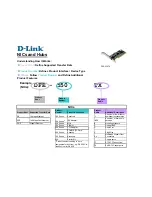
result, downstream devices can execute the protection or recovery procedures they have in place to
establish alternate connectivity paths, as shown in the following illustration.
Figure 127. Uplink Failure Detection Example
If only one of the upstream interfaces in an uplink-state group goes down, a specified number of
downstream ports associated with the upstream interface are put into a Link-Down state. You can
configure this number and is calculated by the ratio of the upstream port bandwidth to the downstream
port bandwidth in the same uplink-state group. This calculation ensures that there is no traffic drops due
to insufficient bandwidth on the upstream links to the routers/switches.
By default, if all upstream interfaces in an uplink-state group go down, all downstream interfaces in the
same uplink-state group are put into a Link-Down state.
Using UFD, you can configure the automatic recovery of downstream ports in an uplink-state group
when the link status of an upstream port changes. The tracking of upstream link status does not have a
major impact on central processing unit (CPU) usage.
UFD and NIC Teaming
To implement a rapid failover solution, you can use uplink failure detection on a switch with network
adapter teaming on a server.
For more information, refer to
For example, as shown previously, the switch/ router with UFD detects the uplink failure and
automatically disables the associated downstream link port to the server. To continue to transmit traffic
upstream, the server with NIC teaming detects the disabled link and automatically switches over to the
backup link in order.
Uplink Failure Detection (UFD)
1017
Summary of Contents for S4820T
Page 1: ...Dell Configuration Guide for the S4820T System 9 8 0 0 ...
Page 282: ...Dell 282 Control Plane Policing CoPP ...
Page 622: ...Figure 81 Configuring Interfaces for MSDP 622 Multicast Source Discovery Protocol MSDP ...
Page 623: ...Figure 82 Configuring OSPF and BGP for MSDP Multicast Source Discovery Protocol MSDP 623 ...
Page 629: ...Figure 86 MSDP Default Peer Scenario 2 Multicast Source Discovery Protocol MSDP 629 ...
Page 630: ...Figure 87 MSDP Default Peer Scenario 3 630 Multicast Source Discovery Protocol MSDP ...
Page 751: ...10 11 5 2 00 00 05 00 02 04 Member Ports Te 1 2 1 PIM Source Specific Mode PIM SSM 751 ...
Page 905: ...Figure 112 Single and Double Tag First byte TPID Match Service Provider Bridging 905 ...
Page 979: ...6 Member not present 7 Member not present Stacking 979 ...
Page 981: ...storm control Storm Control 981 ...
Page 1103: ...Figure 134 Setup OSPF and Static Routes Virtual Routing and Forwarding VRF 1103 ...
















































